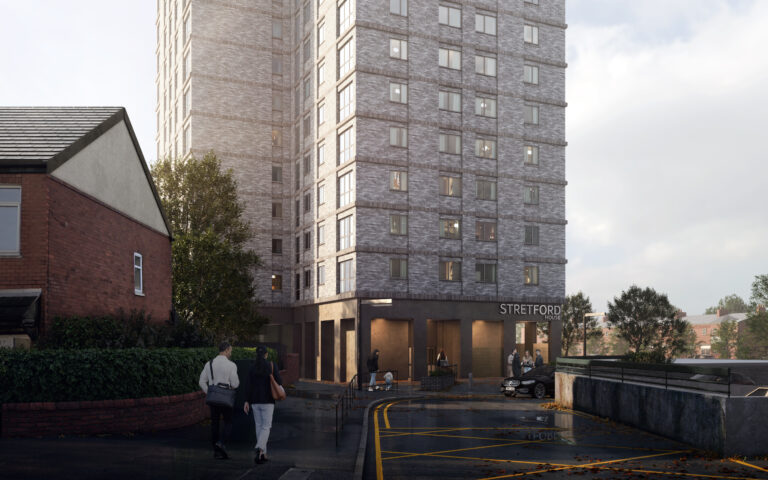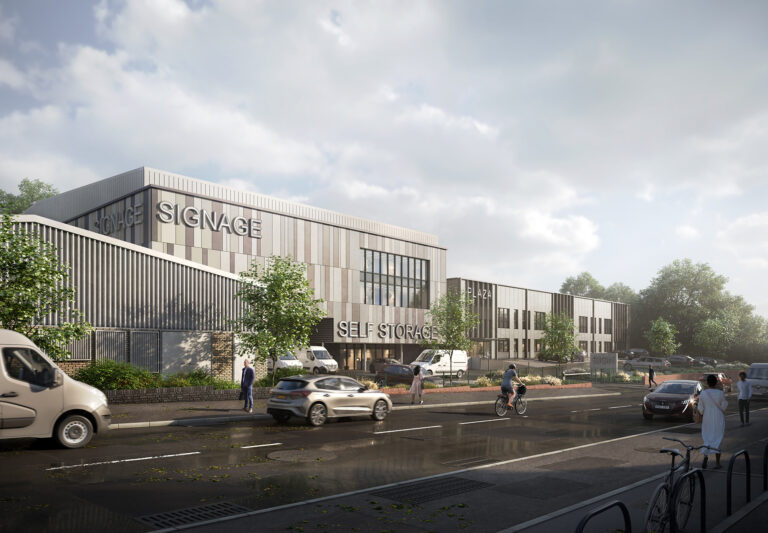Insight: Embracing the Building Safety Act – a cultural and technical shift for our industry
Share Article
The Building Safety Act (BSA) signals a huge change in the way we build high-risk buildings. Representing the most significant overhaul in building safety in decades, it demands all corners of the industry embrace a wholesale shift in how we think about our roles and responsibilities.
We’ve been tracking the evolution of the BSA since the earliest days of the consultation. Although we were doing much of what the Act prescribes before it came into force, we’re also now taking proactive, business-wide steps to not only ensure that all our work meets the requirements of the Act, but that it also reflects its spirit.
In this article, we wanted to take a deeper look at the BSA, discuss how it will affect the way we work and offer some practical advice on how to embrace the new way of working.
Why the Building Safety Act matters
The BSA was enacted in response to the systemic failures revealed by the Grenfell Tower fire in 2017. In short, the tragedy exposed deep-rooted cultural and procedural flaws in how buildings were designed, built, and managed. It was nothing short of a watershed moment for the industry, its effects set to ripple throughout the industry for decades to come.
Dame Judith Hackitt’s independent review, published in 2018, pulled no punches: the system was broken and in dire need of repair. It called for a radical rethink of building safety regulation, rooted in a shift away from a “tick-box” culture and towards one of demonstrable competence, transparency, and accountability. Only through this stringent, approach can we ensure that possible tragedies like Grenfell are consigned to the past.
Accountability is key
The Act itself introduces legally binding roles and responsibilities through new duty holder functions. These apply not only to higher-risk buildings (HRBs) but to all construction projects. The upshot is that everyone involved in the delivery of a project, from conception to delivery on site, has new responsibilities.
Everyone is held to the highest possible standard in terms of safety and accountability.
Let’s be more specific. A developer for a project is now accountable for appointing competent teams. Likewise, principal designers and principal contractors under building regulations (distinct from their CDM counterparts) are responsible for ensuring designs and works comply with regulations throughout the duration of the project.
One of the most significant changes is that it’s no longer acceptable to rely solely on building control to identify compliance issues. The industry itself must now prove that a project meets all requirements. The regulator is no longer there to advise or support; it’s there to enforce the rules and ensure you’re living up to your regulatory responsibilities.
The burden of proof has shifted and the relationship with building control is now one of regulatory oversight, not one of collaborative problem-solving.
The impact on how we work
So far so good, but how is this going to affect the industry? The shift has wide-reaching consequences for the way we work. The new legislation requires us to:
- Plan, manage and monitor the design phase more rigorously
- Demonstrate compliance at every stage, not assuming it will be checked later
- Evidence competence across project teams
- Document decisions and the rationale behind them
- Keep a detailed account of all the above to demonstrate a golden thread of accountability from start to finish
On HRBs, the impact is even more acute due to the introduction of the Gateway process, a three-stage approval system designed to embed safety and accountability throughout the lifecycle of a building.
Gateway 1 takes place at the planning stage and requires a fire statement. This document sets out how fire safety has been considered in the early design, covering aspects such as site layout, access for fire and rescue services, evacuation strategy, and the building’s intended use. It ensures that fundamental fire safety principles are baked into the scheme from the outset. Something that was a critical failing in the Grenfell disaster.
Gateway 2 occurs before construction begins and represents a huge cultural shift. It requires a fully coordinated, construction-ready design package. This includes input from the contractor and key members of the supply chain, with detailed product specification and buildability factored in. Supporting documents must also be submitted, including the construction control plan, fire and emergency file, competence declarations for all duty holders, and a mandatory occurrence reporting framework.
In practice, Gateway 2 is where the regulator scrutinises whether the building can be safely built as designed. No construction work can legally commence until approval is granted.
Gateway 3, the final stage before occupation, demands confirmation that the building has been constructed in line with the approved Gateway 2 submission. Any changes made during construction must be documented and justified through a formal change control process. The regulator will assess whether the completed building meets all relevant building regulations and is safe to occupy.
Only once the Building Safety Regulator is satisfied will a completion certificate be issued. Without it, the building cannot legally be brought into use.
Gateway 2: The big instigator of change
If you’ve been paying attention to much of the discussion going on around the BSA, it’s Gateway 2 that’s been the most disruptive to the way the industry functions. The notion of disruption isn’t to be taken in a negative way here, it’s simply a descriptor of how much change the BSA is precipitating in our industry. It’s a much-needed change but a change that will result in a wholesale sea change across the built environment.
Gateway 2 requires:
- Full coordination between all design disciplines
- Early involvement from contractors and their supply chains
- Product-level specification
- A construction control plan
- A fire and emergency file
- A mandatory occurrence reporting plan.
Before the act came into force, all the above could be deferred until a contractor was appointed to deliver the project. Now, it all must be resolved before a shovel hits the ground.
For architects like us, Gateway 2 is a big change to the sequencing of our work. The amount of detail and coordination we’re now producing at RIBA Stage 4 is significantly greater than before but the timeframes for doing so haven’t necessarily increased, making programming and early engagement critical.
How AEW is responding
We’ve made the BSA a core strategic focus. Our investment in understanding, applying, and communicating the requirements of the Act has been embedded at every level of the business.
In response to this vital new piece of legislation, we’ve done the following:
- Training and knowledge sharing: We’ve delivered firmwide technical updates, CPDs and workshops. Every designer at AEW understands and embraces their responsibilities under the Act.
- Professional accreditation: We have four architects registered under the RIBA Principal Designer for Building Regulations scheme, with a target of having at least one per team. Our technical staff are also progressing through the CIAT (Chartered Institute of Architectural Technologists) equivalent.
- Competency frameworks: We’ve developed a comprehensive corporate and individual competency tracking system. This includes role mapping, training pathways, and limits of responsibility based on experience.
- Standardisation and consistency: Led by our Technical Lead, Wayne Jones, we’ve established consistent methods of evidencing compliance across all teams and sectors. This includes standardised templates for demonstrating how designs meet functional and prescriptive requirements.
- Process development: We’re actively mapping change control processes, ensuring our teams understand how to classify and document changes accurately and at speed.
- Client education: We’re taking our message on the road. Through events, client briefings and project workshops, we’re educating our clients on their legal duties and how to fulfil them.
We’ve already delivered numerous Gateway 2 submissions and are supporting dozens of recladding and retrofit schemes nationally. With each submission, we’re refining our internal processes and improving outcomes for clients. This iterative approach where each submission is better than the last is all part of adapting to the new BSA regulations and working hard to be the best we can be for our clients and for the end users of the buildings we work on.
Practical advice for embracing the Building Safety Act
As covered above, one of the huge changes the BSA brings is that it shifts much of the legal responsibility of a building onto the client. Taking on such a responsibility can understandably be daunting. Where needed, we always work closely with our clients, equipping them with the knowledge they need to understand their responsibilities while giving them the support required to shoulder them.
Here are some of the practical guidance we’d offer for working with the BSA.
- Appoint your principal designer (for building regulations) early. Don’t wait until technical design. If they’re not involved from the start, they can’t fulfil their statutory duties.
- Engage your contractor and supply chain early. Especially for HRBs, product selection and buildability input are essential for Gateway 2. Consider a pre-construction services agreement (PCSA).
- Build in programme time. Gateway 2 approvals are currently taking 30+ weeks. Add design time on top of that. Plan for a year between planning and starting on site.
- Budget for early design development. You’re effectively bringing forward costs that would usually be post-contract. Understand that this is a front-loaded process.
- Understand your legal obligations. You are accountable. You must be able to demonstrate that everyone you appoint is competent. Document your decisions.
- Embrace information management. ISO 19650 and the UK BIM Framework are not just BIM standards, they’re how you’ll manage the golden thread. Ask your team how they’re delivering structured, interoperable, secure digital information.
Looking ahead
The Building Safety Act is not going away. If anything, its scope is set to widen with discussions around including hotels and care homes within the Gateway system. In the future, definitions of HRBs may shift, change control mechanisms will be tested and five-year reviews of safety cases will become standard.
This is more than a compliance exercise. It is a culture change where it’s about doing the right thing, not just the minimum. We believe in delivering safe, high-quality, technically sound buildings and the BSA gives us the opportunity to lead the industry in doing exactly that.
We’re committed to supporting our clients through this new landscape, sharing our knowledge, developing our teams, and helping raise standards across the board.
The BSA is challenging, yes. But it’s also necessary.
We embrace it with open arms.


